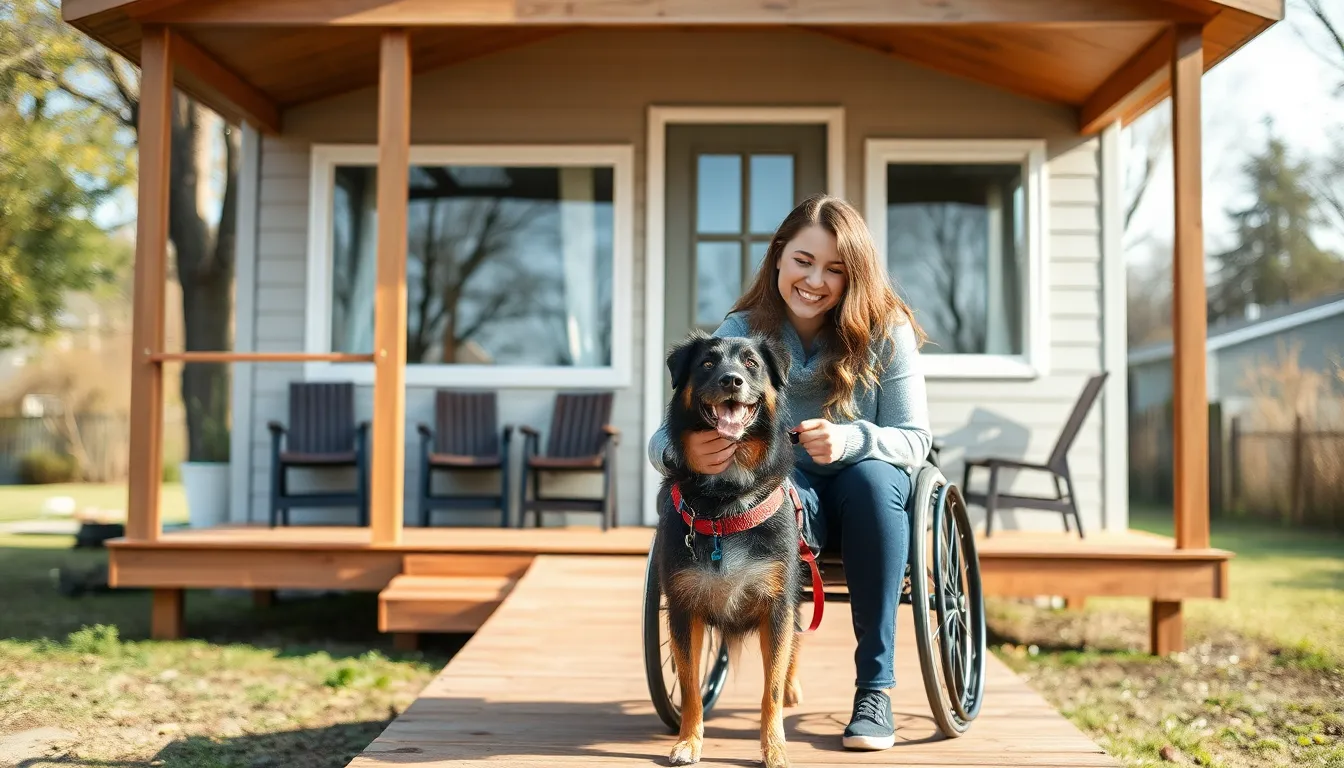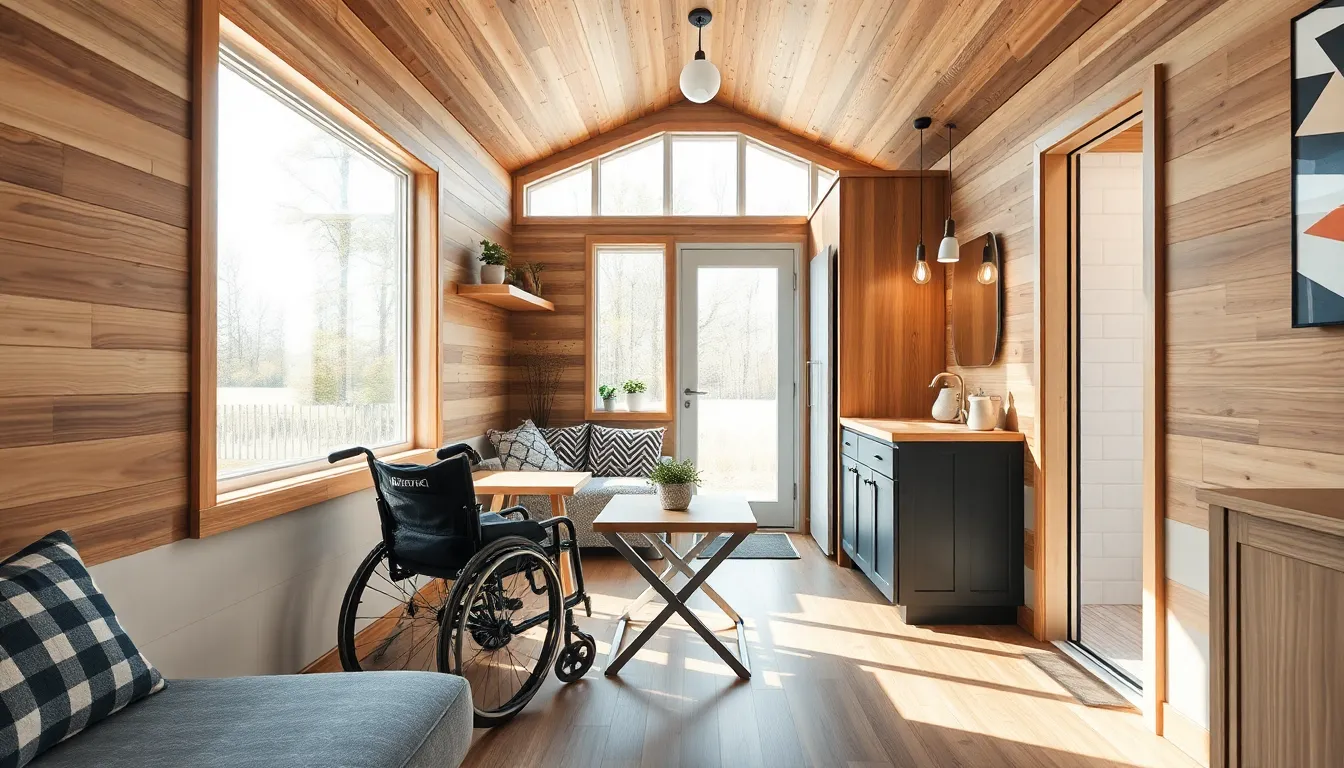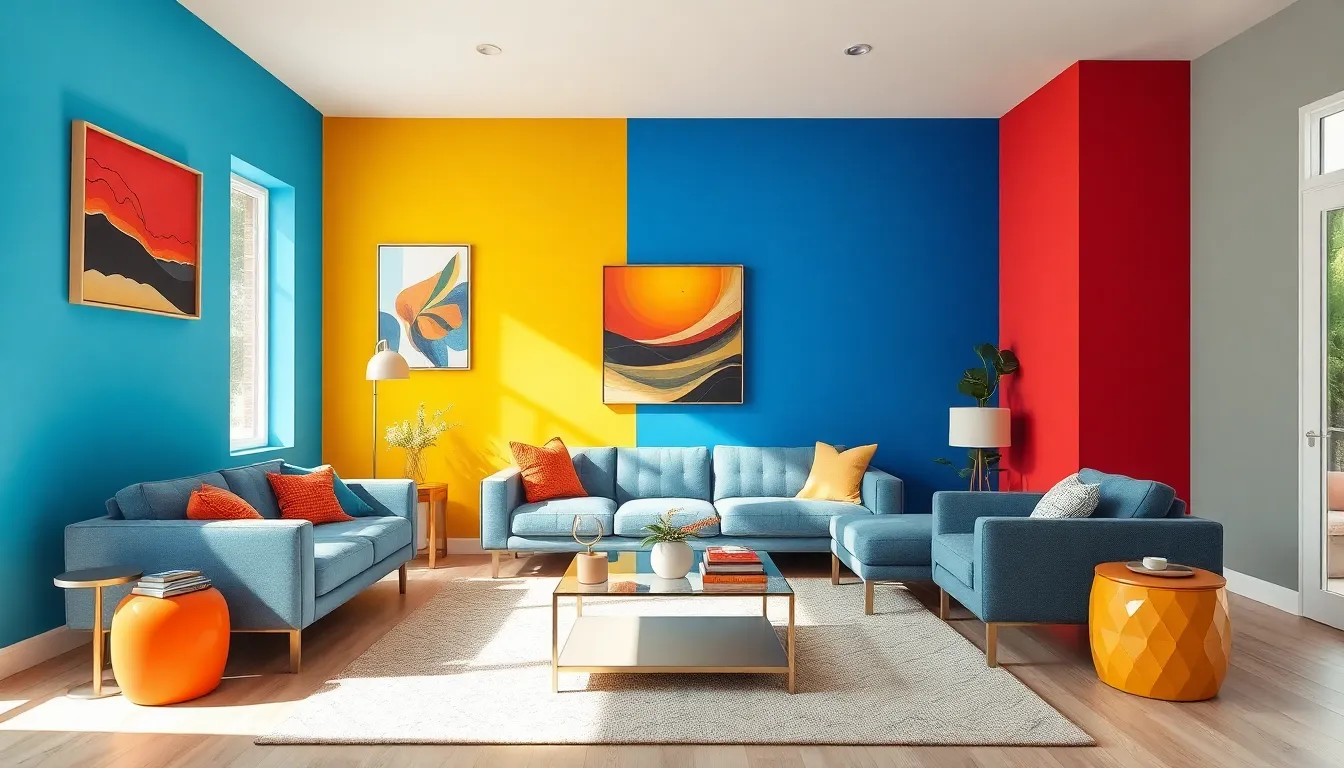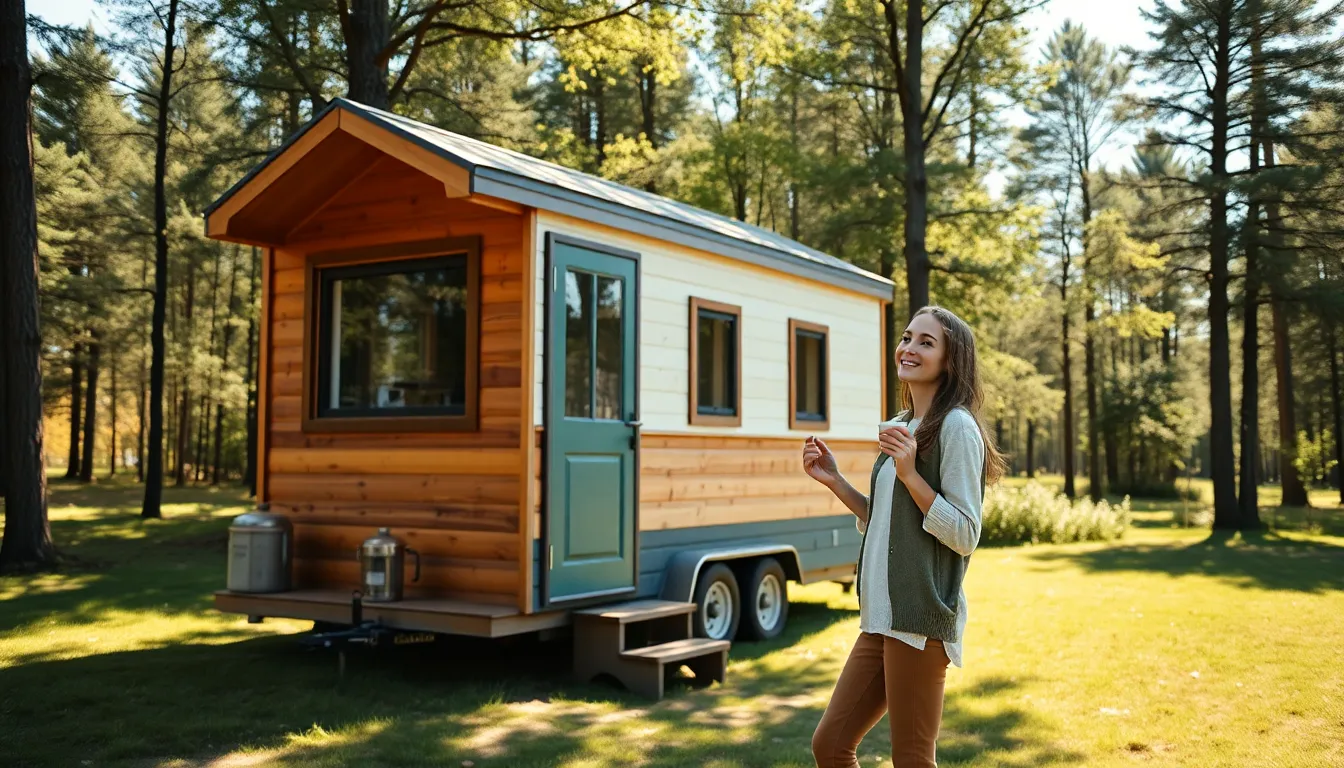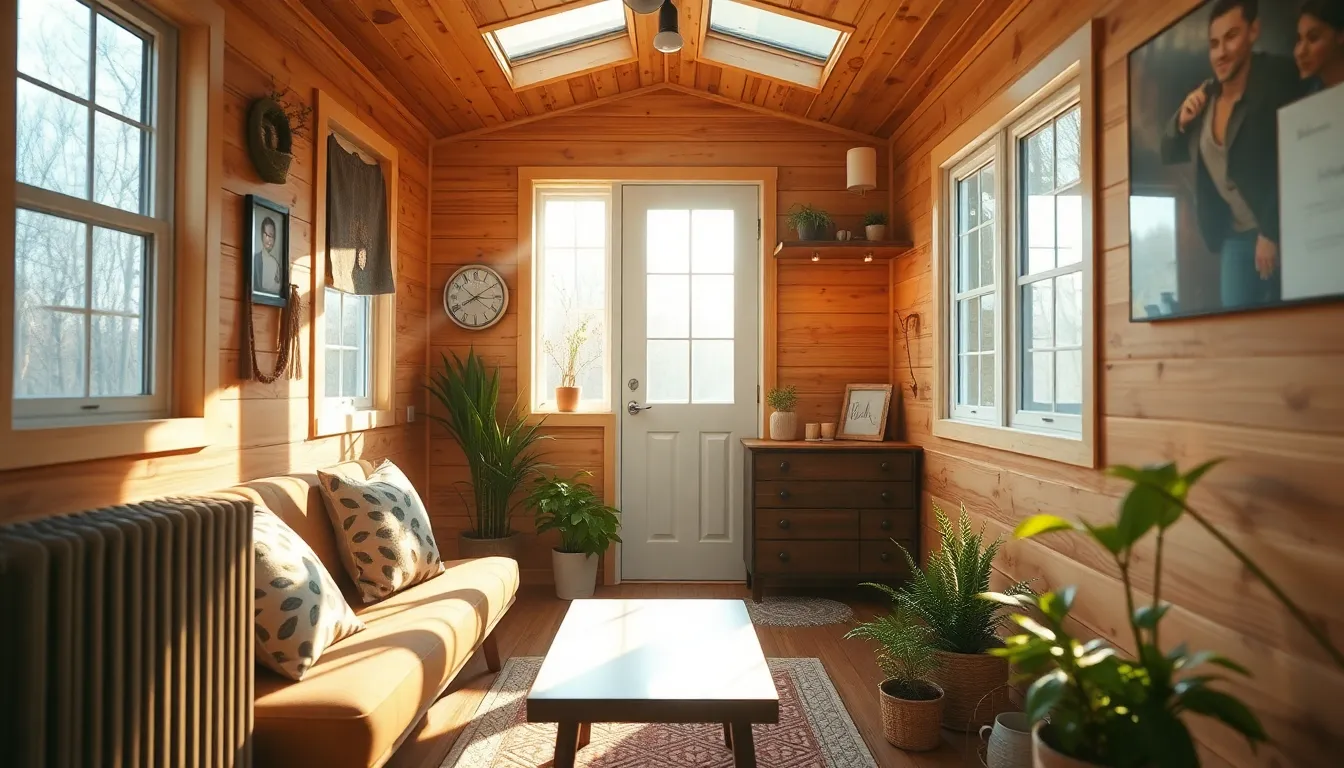Imagine a cozy little haven that’s not only stylish but also rolls with accessibility. The wheelchair accessible tiny house trend is taking the world by storm, proving that small spaces can pack a big punch in comfort and functionality. These homes are designed with everyone in mind, making them the perfect solution for those who want to embrace minimalist living without sacrificing mobility.
Table of Contents
ToggleOverview Of Wheelchair Accessible Tiny Houses
Wheelchair accessible tiny houses combine functionality and design to accommodate individuals with mobility challenges. These homes facilitate a minimalist lifestyle without compromising comfort.
Definition And Importance
Wheelchair accessible tiny houses refer specifically to small living spaces designed to meet the needs of individuals who use wheelchairs. They feature wider doorways, lower countertops, and accessible bathrooms to enhance mobility. The importance of such homes lies in their ability to provide independence, allowing individuals with disabilities to live comfortably and engage in their environment.
Benefits Of Tiny Living For Accessibility
Tiny living offers numerous advantages for those requiring accessible features. Space efficiency enables the incorporation of essential amenities without excess clutter. A smaller footprint reduces maintenance, allowing for easier navigation and cleaning. Community support often exists in tiny house neighborhoods, fostering connections among residents. In addition, energy efficiency tends to lead to lower utility costs, making it financially sustainable.
Design Features Of Wheelchair Accessible Tiny Houses
Wheelchair accessible tiny houses incorporate several design elements to enhance comfort and usability. These houses emphasize efficiency while ensuring necessary accommodations for those with mobility challenges.
Space Optimization
Space optimization in wheelchair accessible tiny houses prioritizes functionality. Open floor plans create a sense of spaciousness, facilitating easier movement throughout the home. Designers often use multi-functional furniture, such as foldable tables and Murphy beds, to maximize available space. Strategic placement of storage solutions, including built-in shelves and cabinets, ensures that essential items remain easily reachable. Additionally, using light colors and large windows enhances natural light, making the interior feel larger while supporting a welcoming atmosphere.
Accessibility Elements
Accessibility elements form the foundation of wheelchair accessible tiny houses. Entrances typically feature zero-step thresholds, simplifying access. Wider doorways, generally measuring at least 36 inches, allow for smooth navigation. Bathrooms often contain roll-in showers equipped with grab bars, enabling safe and independent use. Lower countertops in kitchens and bathrooms ensure that every surface is within reach. Adjustable shelving and pull-out drawers enhance usability by putting items closer to the user. These thoughtful elements create an inviting space while promoting independence.
Popular Models And Brands
Several models and brands excel in producing wheelchair accessible tiny houses, showcasing innovative and functional designs. These options cater to diverse needs, ensuring comfort and style for users.
Innovative Designs
Innovative designs enhance accessibility in numerous tiny house models. Wheel Pad features a unique platform that suits users seeking mobility solutions. The Tiny House Company emphasizes open floor plans, allowing for seamless movement throughout the space. Homestead Tiny House showcases modular designs that prioritize adaptable living arrangements for varying mobility needs. Furthermore, Indigo River Tiny Homes includes custom features such as roll-in showers and adjustable countertops, maximizing usability. Each brand places importance on functional aesthetics, ensuring that accessibility doesn’t come at the cost of style.
Comparisons And Reviews
Reviews highlight key aspects of leading brands in the wheelchair accessible tiny house sector. Wheel Pad generally receives praise for its portable design, offering substantial flexibility. Customers often appreciate Tiny House Company’s commitment to eco-friendly materials and efficient layouts. Homestead Tiny House stands out for its robust construction and user-friendly features. Indigo River Tiny Homes garners positive feedback for customization options, allowing for a more personalized living experience. Comparisons among these models reveal shared strengths in meeting accessibility needs while providing stylish, compact living solutions.
Building And Customization Options
Individuals can create a wheelchair accessible tiny house tailored to their unique needs through various building and customization options.
DIY Approaches
Many opt for DIY approaches to design and build their homes. Constructing a tiny house provides flexibility in selecting features and layouts. Specific accessibility elements can include wider doorways and lower countertops. Utilizing online resources and guides can be beneficial. Workshops and community groups focused on tiny house building offer valuable support. Relying on personal craftsmanship can also save money while creating a unique living space.
Hiring Professionals
Hiring professionals ensures a high-quality, accessible tiny house. Architects and builders with experience in accessible design can provide essential guidance. Contractors can manage specific inclusion features like roll-in showers and zero-step entries. An expert team can help navigate local building codes and zoning laws. Focusing on professionals with a portfolio of accessible designs helps streamline the process. Leveraging contractors’ expertise can lead to a more efficient and stress-free building experience.
Challenges And Considerations
Considerations around zoning and regulations impact the building of wheelchair accessible tiny houses. Local regulations often dictate minimum size requirements, which may limit design options. Zoning laws can restrict placement, making it essential to verify that tiny homes comply within community guidelines. Understanding local building codes ensures that accessibility features meet necessary standards. Researching these regulations in advance can avoid delays and complications.
Budgeting for accessibility features is crucial to the success of wheelchair accessible tiny houses. Individuals should account for possible higher costs associated with specialized designs and materials. Features like roll-in showers, wider doorways, and lower countertops typically require tailored solutions. While upfront costs may be higher, investing in quality materials can lead to long-term savings. Prioritizing essential accessibility features helps ensure comfort and usability, enabling occupants to maximize their living space effectively.
Conclusion
Wheelchair accessible tiny houses represent a significant step toward inclusive living. They empower individuals with mobility challenges by providing stylish and functional spaces that enhance independence. The thoughtful design elements cater to diverse needs while promoting a sense of community and sustainability.
As the trend continues to grow, more options become available, allowing for customization and personalization. This not only ensures comfort but also reflects the unique lifestyles of their occupants. With the right resources and support, building or purchasing a wheelchair accessible tiny house can lead to a fulfilling minimalist lifestyle that embraces both accessibility and aesthetic appeal.

